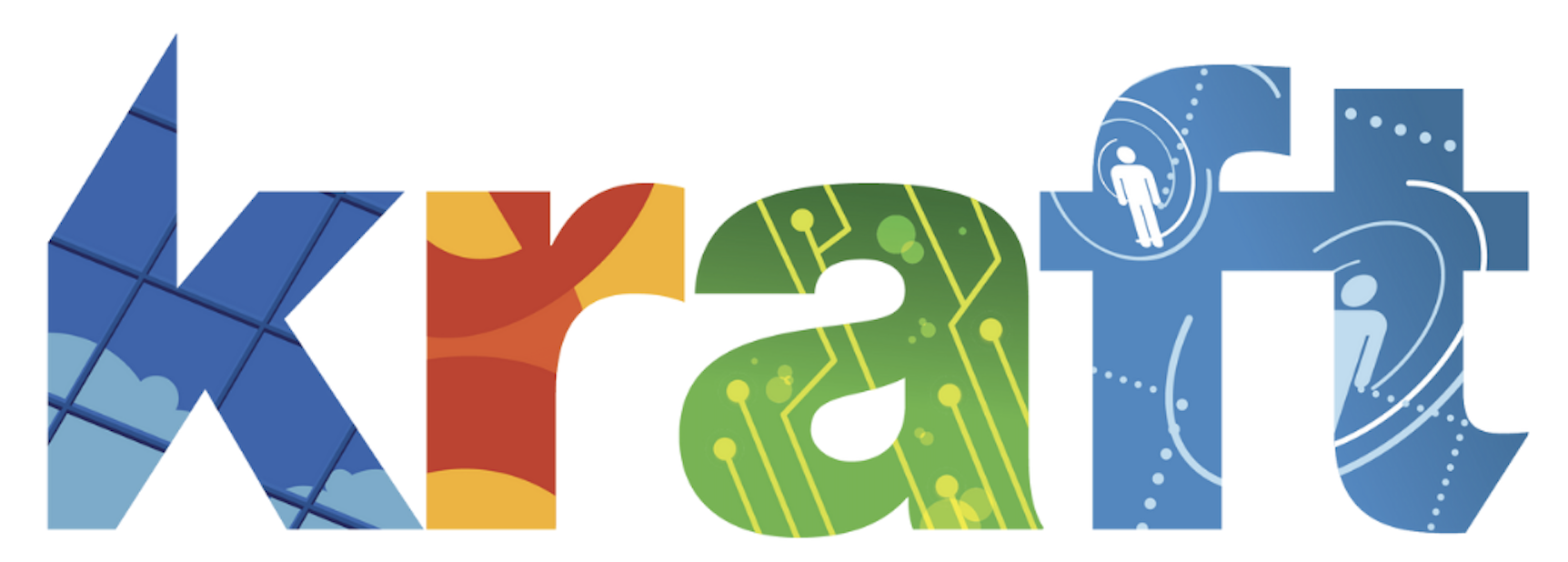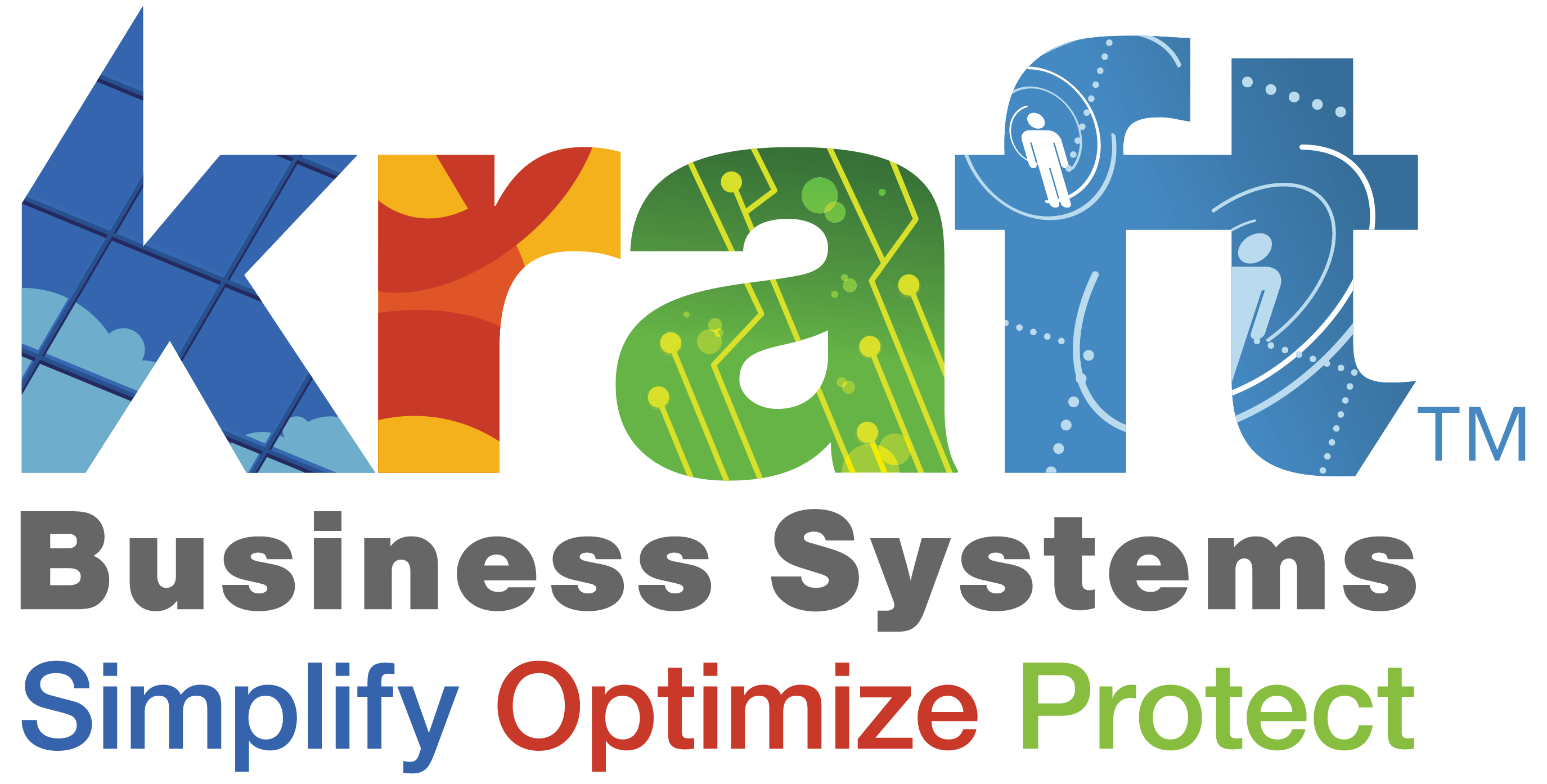Technology solutions for small businesses can dramatically improve efficiency, security, and revenue. Here’s what you need to know:
- Essential solutions: Cloud software, cybersecurity, CRM systems, payment processing, and collaboration tools
- ROI impact: Businesses using digital technologies see 2x more revenue per employee and 58% higher annual revenue
- Protection needed: 43% of cyber attacks target small businesses, and 60% of those attacked close within 6 months
- Implementation priority: Start with core infrastructure, then add specialized tools based on your specific needs
Small business owners face a challenging reality: technology is no longer optional for staying competitive. Whether you run a retail shop, professional service, or local restaurant, the right tech stack can be the difference between struggling and thriving.
“Technology helps us reduce our workload while giving us the tools to work smarter and more efficiently,” notes research from small business technology experts. This efficiency translates directly to your bottom line.
The stats tell a compelling story: companies that leverage digital tools earn twice as much revenue per employee and experience above-average employment growth. Yet surprisingly, 80% of US small businesses aren’t taking full advantage of available digital tools.
What’s holding small businesses back? Often it’s uncertainty about which solutions provide the best return, concerns about implementation costs, or overwhelm from too many options.
The good news is you don’t need enterprise-level budgets to access powerful technology. Today’s solutions are more affordable, user-friendly, and specifically designed for small business needs than ever before.
Whether you’re looking to streamline operations, enable remote work, protect sensitive data, or better connect with customers, there are right-sized tools that can transform how you do business.

Technology solutions for small businesses terms simplified:
Technology Solutions for Small Businesses: Boost Growth in 2025
Essential Technology Solutions for Small Businesses in 2025
Looking around your business, you might wonder which tech tools are truly worth the investment. The digital landscape has shifted dramatically, and what was once considered optional has become essential for daily operations. Let’s explore the must-have technology solutions for small businesses that are making the biggest impact in 2024.
Cloud software has revolutionized how small businesses operate, allowing you to access your critical systems from anywhere with an internet connection. No more being chained to your office computer! AI automation tools are handling repetitive tasks, freeing up your team to focus on what really matters – serving customers and growing your business.
Collaboration suites like Microsoft 365 and Google Workspace have become the backbone of modern workplaces, providing everything from email and document creation to video meetings and team chats. Meanwhile, endpoint security protects your devices from increasingly sophisticated cyber threats that specifically target small businesses.
Data backup solutions ensure that even if disaster strikes, your business information remains safe and recoverable. This peace of mind alone is worth the investment!
Here are 10 must-have tools that small business owners across Michigan are implementing:
- Customer Relationship Management (CRM) systems to track leads and nurture customer relationships
- Cloud productivity suites for email, documents, and collaboration
- Payment processing systems that accept diverse payment methods
- Cybersecurity solutions including firewalls and anti-malware protection
- Project management platforms to keep teams organized and on schedule
- Accounting and financial software for streamlined bookkeeping
- Data backup and recovery tools to protect your valuable information
- Communication tools that enable seamless remote work
- Business websites with mobile-friendly design
- Digital marketing tools to reach your target audience effectively
The numbers tell a compelling story: businesses embracing these digital tools earn twice the revenue per employee compared to those lagging behind. From Grand Rapids to Traverse City, we’ve seen Michigan businesses transform their operations through thoughtful technology adoption.
Struggling with implementation challenges? Check out our guide to Small Business Technology Challenges for practical solutions to common problems.
Why these technology solutions for small businesses matter
The impact of implementing the right technology solutions for small businesses extends far beyond convenience – it fundamentally changes how efficiently and profitably you can operate.
Productivity improvements are immediate and measurable. Small business owners report saving an average of 10 hours weekly through automation – that’s over 500 hours annually you can redirect toward growth activities! Imagine what you could accomplish with an extra 12 weeks of productive time each year.
Cost savings materialize in unexpected ways. Cloud-based solutions eliminate expensive hardware purchases and maintenance, while automated processes reduce labor costs. About 34% of small businesses cite cost reduction as a primary benefit of their technology investments.
Competitive advantage might be the most compelling reason to upgrade your tech stack. With the right tools, even the smallest business can deliver customer experiences that rival major corporations. As one business owner shared, “The right CRM helped me grow from a quarter million to $16.5 million in revenue.”
Modern customers expect seamless digital interactions. They want to book appointments online, receive text confirmations, and pay with digital wallets. By 2025, digital wallets are projected to handle over half of all transaction values – making contactless payment options essential rather than optional.
Perhaps most importantly, technology provides business resilience during unexpected disruptions. Cloud systems enable work-from-anywhere capabilities, protecting your revenue streams even when physical locations are inaccessible – a lesson many businesses learned during recent years.
The right technology stack isn’t just about keeping up with trends—it’s about creating a foundation for sustainable growth that can weather any storm.
Technology Solutions for Small Businesses: Boost Growth in 2025
Cloud & Remote Work: Working Smarter Anywhere

Remember when “going to work” meant physically being at your desk? Those days are fading fast. Cloud computing has completely transformed how small businesses operate, opening doors to flexibility that seemed impossible just a few years ago.
Technology solutions for small businesses now include Software as a Service (SaaS) options that give even the smallest companies access to powerful tools once reserved for major corporations—all without needing expensive servers or an IT department.
Think about what this means for your business: Your team can access important files from their kitchen table, a coffee shop, or while visiting clients. Your sales rep can update customer information from their phone right after a meeting. Your accountant can process payroll while working from home during a snowstorm.
“The ability to put some controls around where people are, what people are doing, and what they’re doing it with, have become very, very fluid,” as one technology expert puts it. This flexibility is a game-changer for businesses across Michigan—whether you’re in busy Grand Rapids or seasonal Traverse City.
The cloud has made business life simpler in so many ways:
Accessibility means your team can work from anywhere with internet access. That meeting note you need? It’s available on your phone, tablet, or laptop, no matter where you are.
Scalability allows your technology to grow alongside your business. Need to add three new employees? No problem—just adjust your subscription, no hardware required.
Automatic updates ensure you’re always working with the latest features and security patches. No more scheduling downtime for upgrades.
Reduced IT burden means you can focus on your business instead of troubleshooting server issues or installing software updates.
Disaster recovery capabilities keep your data safe even if your office experiences flooding, fire, or other disasters—because your information is stored securely in multiple locations.
Small businesses are embracing cloud tools that make daily operations smoother. File sharing through Google Drive or Dropbox Business keeps everyone on the same page. Video meetings via Zoom or Microsoft Teams connect teams across distances. Project tracking with Trello or Asana keeps deadlines visible. Customer relationships flourish with Salesforce or HubSpot, while finances stay organized with QuickBooks Online or Xero.
If you’re wondering about server options for your business, our guide to Best Small Business Server Solutions offers insights on choosing between cloud and on-premises systems.
Choosing cloud-based technology solutions for small businesses
Finding the right cloud services for your business isn’t just about picking the most popular options. It’s about matching technology to your specific needs.
Scalability needs should guide your choices. The beauty of cloud solutions is their flexibility—start with what you need today and expand as you grow. This pay-as-you-go approach means your technology investment grows in step with your business, not ahead of it.
Security considerations remain top of mind for business owners. While 80% of SMBs prefer cloud solutions for their next financial system, they’re right to ask tough security questions. Look for providers offering strong data encryption, regular security audits, multi-factor authentication, clear data ownership policies, and solid backup procedures.
Integration capabilities turn separate tools into a powerful ecosystem. Before committing to any platform, verify it plays well with your existing tools. The magic happens when your CRM automatically feeds data to your marketing platform or when your project management tool syncs with your billing system.
Total cost of ownership goes beyond the monthly subscription fee. Consider the complete picture: subscription costs, potential bandwidth upgrades, training time, and implementation expenses. Even with these factors, cloud solutions typically offer better value than maintaining on-site systems.
Comparing Cloud vs. On-Premises Solutions
| Factor | Cloud Solutions | On-Premises Solutions |
|---|---|---|
| Initial Investment | Low (subscription-based) | High (hardware, software licenses) |
| Ongoing Costs | Predictable monthly fees | Variable (maintenance, upgrades, power) |
| Scalability | Easily scale up or down | Requires hardware purchases to scale up |
| Maintenance | Handled by provider | Requires internal IT resources |
| Accessibility | Available anywhere with internet | Typically limited to office network |
| Control | Provider manages infrastructure | Complete control over infrastructure |
| Security | Shared responsibility | Fully your responsibility |
Many Michigan businesses find that a hybrid approach works best, especially when dealing with specific compliance requirements or unique operational needs. At Kraft Business Systems, we help clients across Grand Rapids, Detroit, and throughout Michigan find the perfect balance of cloud and on-premises solutions that match their specific situation and goals.
Technology Solutions for Small Businesses: Boost Growth in 2025
Cybersecurity, Backup & Business Continuity
Small business owners often think cyber criminals only target large corporations—but that couldn’t be further from the truth. A sobering 43% of cyber attacks specifically target small businesses, and worse yet, 60% of those attacked close their doors within six months. For your business, strong technology solutions for small businesses must include robust security measures—it’s not just good practice, it’s survival.
Essential cybersecurity components include:
- Next-generation firewalls that inspect traffic for malicious content
- Zero-trust architecture that verifies every user and device before granting access
- Ransomware protection through advanced threat detection and response
- Multi-factor authentication (MFA) to prevent unauthorized access even if passwords are compromised
- Endpoint protection for all devices connecting to your network
- Email security to prevent phishing and business email compromise attacks
- Security awareness training for all employees
“The global health crisis made one thing abundantly clear: Businesses need to change the way they think about protecting data,” notes cybersecurity research. This new reality applies to mom-and-pop shops just as much as it does to Fortune 500 companies.
Protecting your business isn’t just about preventing attacks—it’s about ensuring you can bounce back when problems occur. Think of business continuity as your safety net when things go wrong. This includes setting up automated data backups with copies stored both locally and off-site, creating clear disaster recovery procedures with defined responsibilities, regularly testing your continuity plans, and implementing cloud-based systems that remain accessible even when your physical location isn’t.
For Michigan businesses that face everything from brutal winter storms to unexpected power outages, these measures aren’t just nice-to-haves—they’re essential. Our guides to Small Business Network Security Solutions and Small Business Data Protection dive deeper into these critical areas.
Protecting technology solutions for small businesses from threats
Building effective protection starts with a thoughtful approach:
First, conduct a thorough risk assessment. What are your digital crown jewels? Is it customer data? Financial records? Intellectual property? Operational systems? Understanding what needs protection helps you invest security dollars where they matter most. A small retail shop might prioritize point-of-sale systems, while a law firm might focus on client confidentiality.
Next, invest in ongoing security training. People remain the weakest link in security—even with the best technical protections in place. One careless click can undo everything. Regular training sessions should teach employees how to spot phishing attempts, create strong passwords, browse safely, secure their mobile devices, handle sensitive data properly, and report security concerns.
“Small businesses are particularly vulnerable to cyberthreats, so proactive security is essential,” explains one IT expert. This vulnerability makes education your first line of defense.
Finally, develop a solid incident response plan. Despite your best efforts, security incidents may still happen. Having a documented plan helps minimize damage and recovery time. Your plan should outline how to contain an attack to prevent it from spreading, collect evidence for potential legal action, communicate with affected customers or partners, restore systems and data, and analyze what happened to prevent similar breaches.
At Kraft Business Systems, we understand the unique security challenges facing Michigan businesses—from busy urban centers like Detroit to smaller communities like Benzonia. We help develop security strategies that protect what matters without making daily operations difficult. Security shouldn’t be a burden; it should be a foundation that lets you focus on growing your business with confidence.
Technology Solutions for Small Businesses: Boost Growth in 2025
Customer Growth Stack: CRM, Marketing & Service Tools

Growing your customer base isn’t just about finding new people to buy your products—it’s about building lasting relationships. Modern technology solutions for small businesses make this process smoother, more efficient, and frankly, a lot less stressful.
At the heart of your customer growth strategy should be a solid Customer Relationship Management (CRM) system. Think of your CRM as the brain that remembers everything about your customers so you don’t have to. It stores contact information, tracks interactions, and helps you understand each customer’s unique journey with your business.
“A CRM solution is one of the most valuable, game-changing pieces of business technology available,” according to Salesforce research. And our clients across Michigan would agree! When you can see your entire sales pipeline at a glance, you’ll know exactly where to focus your energy each day.
Your CRM becomes even more powerful when paired with marketing automation tools. These handy systems can send personalized emails, schedule social media posts, and even capture new leads while you sleep. Imagine waking up to new qualified leads that came in overnight—all because your technology was working while you weren’t!
To complete your customer growth stack, you’ll want to add customer service tools that help you deliver consistent, high-quality support. From help desk systems that track issues to knowledge bases that empower customers to find their own answers, these tools ensure no customer concern falls through the cracks.
For Michigan businesses looking to level up their customer experience, check out our guide to Best IT Services for Small Businesses for more specific recommendations.
How technology solutions for small businesses boost customer relationships
When you implement the right customer growth stack, you’ll see improvements across your entire business. Here’s how these tools transform relationships:
Improved Lead Tracking means no potential customer gets forgotten. Remember Tom, the prospect who wasn’t quite ready last quarter? Your CRM will remind you to check in at just the right time. One Grand Rapids retailer we work with increased their conversion rate by 23% simply by implementing systematic follow-ups through their CRM.
Personalized Campaigns make customers feel understood. Research shows personalized emails deliver 6x higher transaction rates compared to generic messages. As one of our clients in Ann Arbor put it, “My CRM allows me to have different conversations with different customers—sending landscaping tips to homeowners and property management advice to my commercial clients.”
Improved Retention Metrics help you keep the customers you’ve worked so hard to win. Your technology stack can help identify which customers might be thinking about leaving before they actually do. A quick check-in call or special offer might be all it takes to keep them in the fold. And since increasing customer retention by just 5% can boost profits by 25-95%, this alone can pay for your technology investment.
Unified Customer View creates seamless experiences. When everyone on your team can see the full customer history, you avoid those awkward “Please explain your problem again” moments that frustrate customers. Your sales team will know about recent service issues, and your support team will understand each customer’s purchase history.
For Michigan businesses—whether you’re running a busy shop in Grand Rapids or providing professional services in Traverse City—these tools help you deliver big-business customer experiences without needing a massive team. At Kraft Business Systems, we’ve helped countless small businesses find and implement the right-sized customer growth technology that fits both their goals and their budget.
Technology Solutions for Small Businesses: Boost Growth in 2025
Smart Finance & Payments Automation

Money matters can make or break a small business. That’s why smart financial technology solutions for small businesses deliver some of the quickest returns on your investment. These tools do more than just process payments—they give you back precious time and provide clarity about your financial health.
Let’s talk about payments first. Remember when a simple credit card machine was cutting-edge? Those days are long gone! Your customers now expect multiple ways to pay, and meeting those expectations can significantly boost your sales.
Digital wallets like Apple Pay and Google Pay are becoming the norm, not the exception. Research shows these payment methods will represent over half of all transaction values by 2025. When a customer can simply tap their phone to pay, the purchasing experience becomes almost frictionless.
Mobile POS systems have transformed tablets and smartphones into powerful checkout terminals. This flexibility is perfect for businesses across Michigan—whether you’re selling at an art fair in Ann Arbor or need multiple checkout points in your Grand Rapids retail store.
QR code payments gained tremendous popularity during the pandemic and are here to stay. They’re incredibly cost-effective since they require minimal hardware investment. Just print a code, and you’re ready to accept payments.
Online payment gateways are essential if you sell anything through a website. They securely process credit cards while integrating with your other business systems. For many Michigan businesses, expanding into e-commerce has opened up markets far beyond their local community.
Beyond simply taking payments, financial management tools give you unprecedented control over your business finances:
Cloud accounting software gives you real-time access to your financial position from anywhere. No more waiting until month-end to know where you stand. As one business owner put it, “Having my finances available on my phone means I can make informed decisions on the spot.”
Expense management apps with automatic receipt capture save hours of tedious work. Just snap a photo of receipts, and the software handles categorization and record-keeping. Your accountant will thank you at tax time!
Invoicing solutions with automated reminders gently nudge clients when payments are due, improving your cash flow without awkward collection calls. For service businesses throughout Michigan, this automation has dramatically reduced payment delays.
For comprehensive guidance on modernizing your financial systems, check out our guide to Essential IT Services for Small Business.
Streamlining cash flow with tech
Cash flow is the lifeblood of any small business. Even profitable companies can fail if they run out of cash at the wrong moment. Technology offers powerful solutions to keep your cash flowing smoothly:
Real-time insights transform financial management from reactive to proactive. Instead of being surprised by cash shortfalls, you can see potential issues weeks in advance. This visibility is particularly valuable for seasonal businesses in Michigan, from summer tourism in Traverse City to winter holiday retail in Grand Rapids.
“Having a dashboard that shows exactly where we stand financially has completely changed how we operate,” shares one Kraft Business Systems client. “We can make confident decisions because we know our numbers.”
Automated reminders take the awkwardness out of collections. The system politely follows up on overdue invoices while you focus on serving customers. Many businesses report receiving payments 30-40% faster after implementing automated billing systems.
Reconciliation used to consume hours of tedious work each month. Modern systems match transactions automatically, flagging only exceptions that need your attention. This efficiency means you’ll spend less time on bookkeeping and more time growing your business.
Cash flow forecasting tools analyze your historical patterns to predict future needs. This foresight helps you prepare for seasonal downturns, plan major purchases, and maintain adequate reserves. For Michigan businesses dealing with everything from summer tourist seasons to winter weather disruptions, these predictions are invaluable.
At Kraft Business Systems, we’ve helped countless small businesses across Michigan implement financial technologies that provide both immediate efficiency and long-term strategic advantages. We understand that choosing the right tools can feel overwhelming, which is why we focus on solutions that integrate seamlessly with your existing systems and truly address your specific business challenges.
Technology Solutions for Small Businesses: Boost Growth in 2025
Selecting & Implementing Tech on a Budget
Finding the right technology solutions for small businesses doesn’t require emptying your bank account. With some smart planning and a thoughtful approach, even the smallest companies can access powerful tools that deliver real results.
Starting your tech journey begins with knowing exactly what you need. Take time to identify specific challenges in your business that technology could solve. Are you losing hours to manual bookkeeping? Struggling to keep track of customer communications? Once you know your pain points, you can prioritize solutions that will make the biggest difference.
“Small businesses don’t need to be cutting-edge tech firms to benefit from modern tools,” as research consistently shows. The real secret is finding tools that solve your specific problems rather than chasing whatever’s trendy in tech magazines.
When researching vendors, look for those who understand small business realities. Ask for references from companies similar to yours, and don’t be shy about requesting a trial period before fully committing. Most reputable providers offer demos or free trials that let you test-drive their solutions.
Before signing any contracts, run the numbers on potential return on investment. Consider both the obvious savings (like reduced labor costs) and the less tangible benefits (like improved customer satisfaction). A good technology investment should pay for itself over time.
Also make sure any new solution can grow with your business. That bargain-basement software might look appealing now, but if you’ll outgrow it in six months, it could end up costing more in the long run. Similarly, check that new tools will play nicely with your existing systems to avoid creating technology silos.
For Michigan businesses seeking guidance on making smart technology choices, our resources on Managed IT Services for Small Businesses and IT Support for Small Businesses offer valuable insights custom to local business needs.
Best practices for rolling out new technology solutions for small businesses
Getting new technology up and running successfully takes more than just making a purchase. Here’s how to ensure your tech investment delivers:
Start small with pilot projects. Before rolling out new technology company-wide, test it with a small group of users first. This controlled approach helps you identify and fix problems before they affect your entire operation. As technology advisor Laurie McCabe puts it, “Always remember to kick the tires by testing solutions with actual users.”
Create detailed integration checklists that cover everything from data transfer procedures to user access settings. These checklists help ensure nothing falls through the cracks during implementation and minimize disruption to your daily operations.
Take a phased approach to implementation rather than changing everything overnight. You might start with core features and gradually add more advanced capabilities as your team becomes comfortable with the new system. This prevents overwhelm and allows you to adjust based on real-world feedback.
Technology adoption doesn’t end on launch day. Plan for ongoing support through regular check-ins, tip sheets, and refresher training. Even the most intuitive systems benefit from continued attention to ensure everyone is using them effectively.
Don’t forget to track and celebrate successes along the way. When you see improvements in efficiency, customer satisfaction, or other key metrics, share those wins with your team. Recognizing progress helps reinforce the value of the new tools and encourages continued adoption.
At Kraft Business Systems, we’ve guided businesses throughout Michigan—from small shops in Maple City to growing enterprises in Grand Rapids—through successful technology implementations. We focus on practical solutions that align with real business goals and respect your budget constraints. Our team understands that technology should serve your business, not the other way around.
Technology Solutions for Small Businesses: Boost Growth in 2025
Frequently Asked Questions about Technology Solutions

What is the first technology investment a small business should make?
When you’re just starting your technology journey, the foundation matters most. Think of reliable internet and basic cybersecurity as your business’s digital foundation – without these essentials in place, everything else you build might be at risk.
Beyond these basics, your first major tech investment should reflect what your business actually does:
If you run a service business, a good Customer Relationship Management (CRM) system might deliver the biggest immediate impact. These tools help you track client interactions, remember important details, and nurture relationships that drive repeat business.
For retail shop owners, point-of-sale and inventory management systems typically deserve priority. These technology solutions for small businesses directly impact your daily operations and customer experience.
Professional service providers often find the greatest value in project management and time tracking tools. These systems help capture billable hours and keep client work organized – directly affecting your bottom line.
Manufacturing businesses might want to focus first on production management systems that improve quality control and efficiency.
“Almost 60% of small and medium businesses expected to increase their technology spending in 2024,” according to recent research, but their priorities varied widely based on industry needs and growth stage.
At Kraft Business Systems, we always recommend starting with a thorough technology assessment. This helps identify which investments will make the biggest difference for your specific Michigan business, whether you’re in Grand Rapids, Detroit, or a smaller community.
How much should a small business budget for new technology each year?
The “right” technology budget isn’t one-size-fits-all, but research suggests most small businesses allocate between 3-6% of annual revenue to technology investments.
Your technology budget should cover several key areas:
- Replacing aging computers and other hardware
- Software subscriptions that power your operations
- IT support to keep everything running smoothly
- Security solutions to protect your business
- Training so your team can use everything effectively
- A small reserve fund for unexpected technology issues
Rather than viewing tech spending as a necessary evil, think of it as an investment with measurable returns. Every major technology decision should include a simple ROI analysis – how will this purchase either save money or help generate more revenue?
For businesses across Michigan dealing with seasonal patterns – whether you’re in tourism-heavy Traverse City or manufacturing-focused Detroit – consider technology solutions for small businesses that can flex with your changing needs throughout the year.
How can small businesses keep up with rapidly changing tech trends?
You don’t need to chase every shiny new technology that makes headlines. Instead, take a more focused approach to staying current:
Connect with other business owners in your industry to learn what technology is actually working for them. Their real-world experiences often provide more valuable insights than generic tech news.
Find a trusted technology advisor who takes time to understand your specific business challenges. At Kraft Business Systems, we pride ourselves on being that kind of partner for Michigan businesses – we translate tech trends into practical advice custom to your situation.
Schedule regular technology check-ins with your team or advisor. Even a quarterly conversation about what’s working well and what needs improvement can keep you from falling behind.
When you do identify a promising new technology, start small. Test it with a limited group or in one department before committing your entire business to a new system.
As one recent study noted, “Two-thirds of SMBs say that AI has already had a large or moderate impact on their organization.” However, the specific applications that deliver real value vary tremendously by industry and business model.
The goal isn’t to have the newest technology – it’s to have the right technology that helps your specific business thrive. Technology solutions for small businesses work best when they’re selected with your unique challenges and opportunities in mind.
Technology Solutions for Small Businesses: Boost Growth in 2025
Conclusion
The digital change of your small business doesn’t need to feel like climbing a mountain. With the right technology solutions for small businesses, you can turn everyday challenges into opportunities for growth and efficiency.
Throughout this guide, we’ve seen how accessible these tools have become – regardless of your budget or technical expertise. The key is taking that first step, then building your technology foundation one piece at a time.
When evaluating your options, remember what matters most: real business outcomes. The flashiest features mean nothing if they don’t solve your specific problems or create meaningful advantages for your team. Focus on how technology can remove barriers, not just how impressive it sounds on paper.
Your systems should talk to each other seamlessly. This integration prevents the frustration of data silos and duplicate work that can make technology feel more like a burden than a benefit. Before adding any new tool, ask: “How will this work with what we already have?”
Look beyond the price tag to understand what a solution truly costs. That $20/month subscription might seem affordable, but factor in implementation time, training needs, and potential customization. Conversely, don’t let a higher upfront cost scare you away from a solution that could deliver substantial long-term savings.
Even the most powerful technology fails without user adoption. Plan for how you’ll bring your team along on this journey. Their enthusiasm (or resistance) will ultimately determine whether your investment pays off.
Security isn’t an add-on – it’s the foundation everything else stands on. Build protection into your systems from day one, especially if you handle sensitive customer information.
Finally, measure what matters. Track specific metrics before and after implementation to validate your investments and guide future decisions. This data-driven approach helps cut through the noise of endless technology options.
For small businesses across Michigan – whether you’re serving coffee in Grand Rapids, providing legal services in Ann Arbor, or running a seasonal shop in Traverse City – the right technology lets you compete with businesses many times your size.
At Kraft Business Systems, we understand the unique challenges facing small businesses in our communities. We’ve walked alongside hundreds of local business owners as they’ve steerd their technology journeys. Our approach isn’t about pushing the latest shiny object – it’s about finding practical solutions that make your daily operations smoother, more secure, and more profitable.
Whether you’re just starting to explore technology options or looking to optimize systems you already have in place, we’re here to help. Our team specializes in making technology approachable and valuable for businesses just like yours.
Ready to see how the right technology can transform your business? Explore our IT Solutions or reach out about our Managed IT Support. Let’s start a conversation about your specific needs – no technical jargon, no pressure, just straight talk about how we can help your business thrive.
Digital change doesn’t have to be complicated or expensive. With the right partner guiding you, it becomes a straightforward path to greater efficiency, better security, and sustainable growth.






